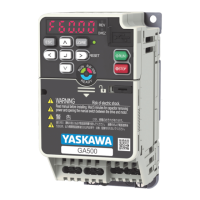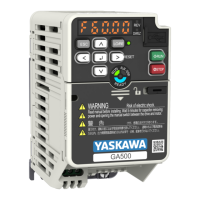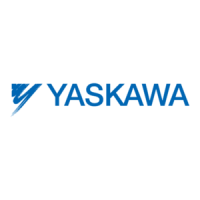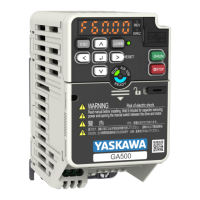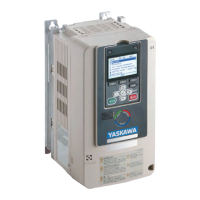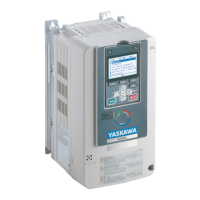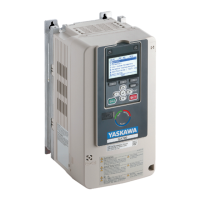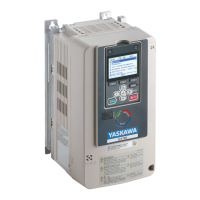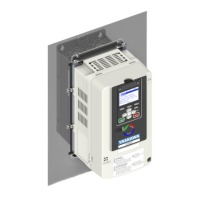12 Drive Control, Duty Modes, and Programming
YASKAWA TOEPC71061752B GA500 Drive Installation & Primary Operation 81
Control
Methods
A1-02 Main Applications
V/f 0
• Use for main variable-speed applications, especially when you operate more than
one motor with one drive.
• Use also when you do not have sufficient data to set the motor parameters.
OLV
2
(Default)
• Main Applications of Variable Speed Control
• Use for applications in which high-precision and high performance are necessary
and you do not use speed feedback.
EZOLV 8
• Main Applications of Variable Speed Control
• Use for applications in which high-precision and high performance are not
necessary and you do not use speed feedback.
◆ Drive Duty Modes
The drive has two duty modes from which to select for the application: Heavy Duty (HD) and
Normal Duty (ND).
Refer to Table 12.1 for information about the differences between HD and ND ratings.
Table 12.1 Drive Duty Modes
Duty Rating
C6-01
Setting
Application
Default Carrier
Frequency
Overload Tolerance
(oL2 [Drive
Overload])
Heavy Duty Rating
(HD)
0
• Extruder
• Conveyor
• Cranes
• Constant torque or high
overload capacity
Determined by o2-04,
A1-02
150% of the rated
output current for 60
seconds The permitted
frequency of overload is
one time each 10
minutes.
Normal Duty Rating
(ND)
1
• Fan
• Pump
• Blower
• Variable speed control
Determined by o2-04,
A1-02
110% of the rated
output current for 60
seconds The permitted
frequency of overload is
one time each 10
minutes.
◆ Auto-Tuning for Induction Motors
This section gives information about Auto-Tuning for induction motors. Set motor parameters
E1-xx and E2-xx (or, for motor 2, E3-xx and E4-xx) for Auto-Tuning.
Note:
Do Stationary Auto-Tuning if you cannot do Rotational Auto-Tuning. There can be large differences between the
measured results and the motor characteristics when Auto-Tuning is complete. Examine the parameters for the
measured motor characteristics after you do Stationary Auto-Tuning.
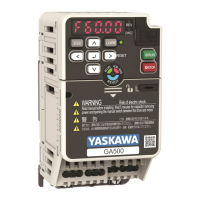
